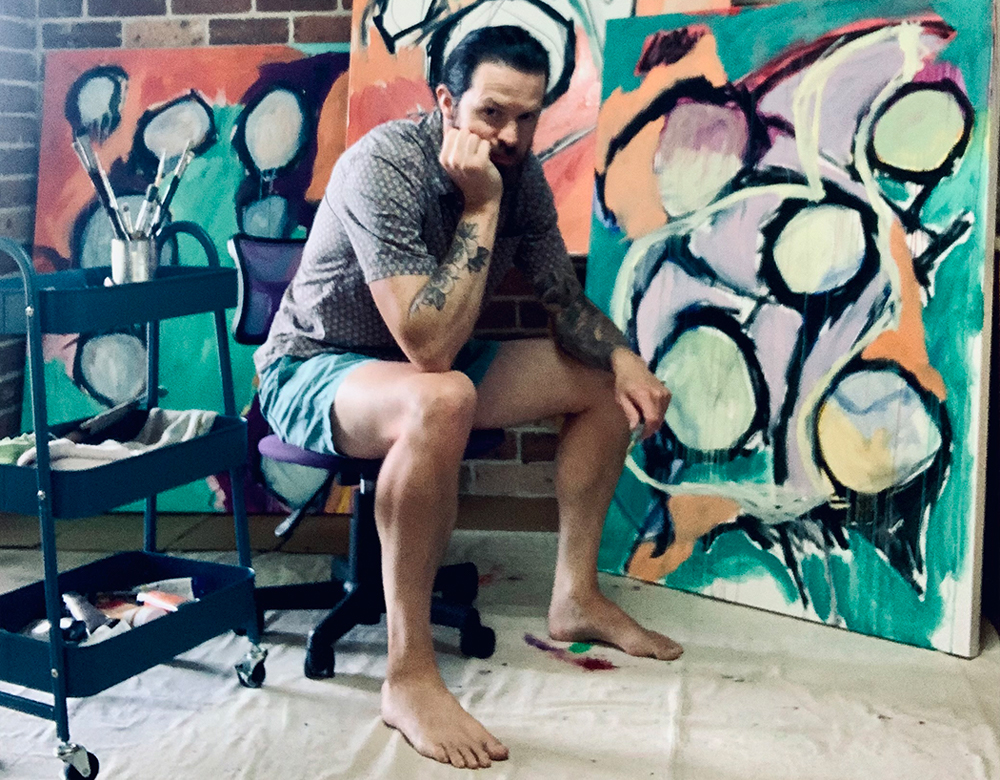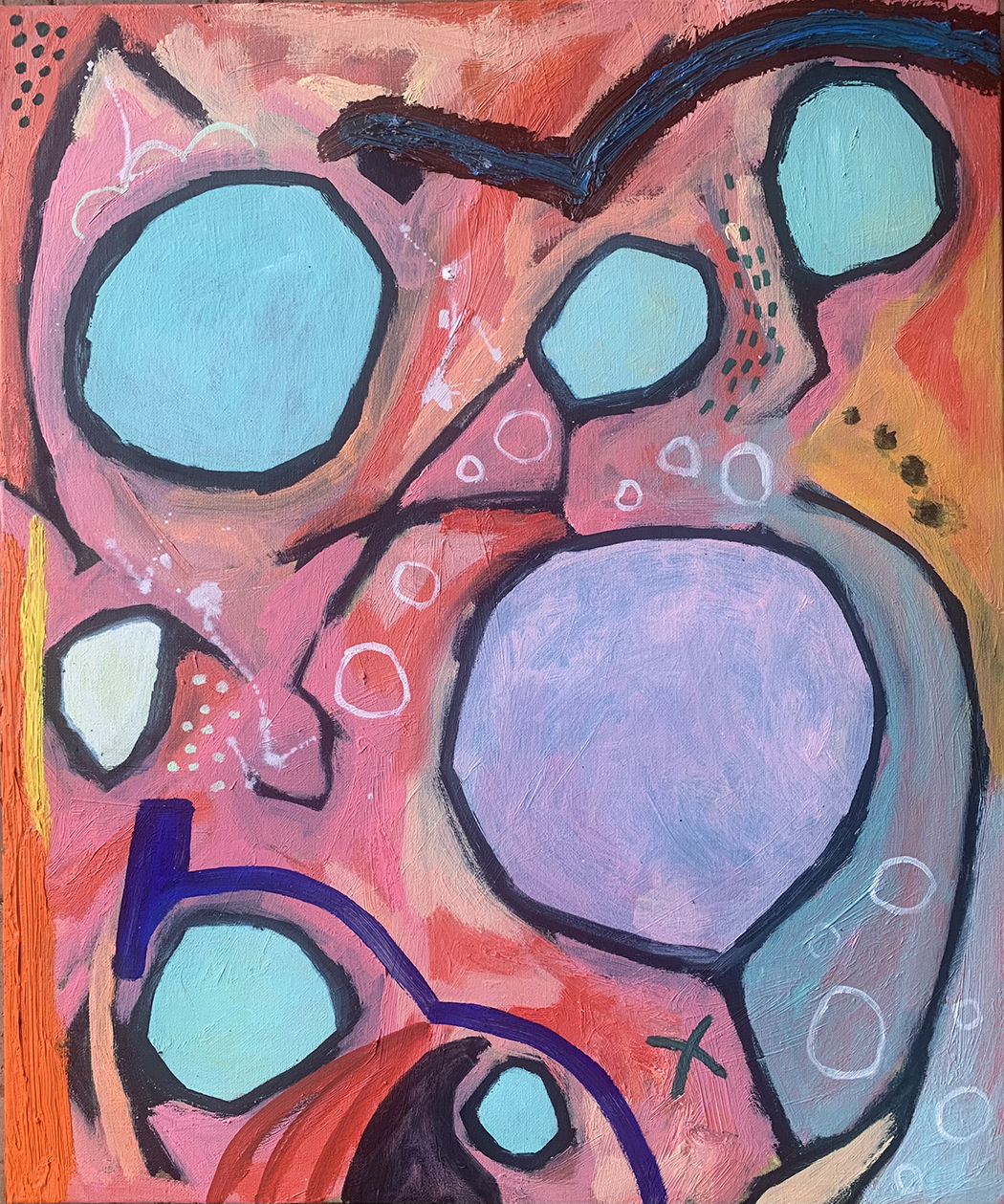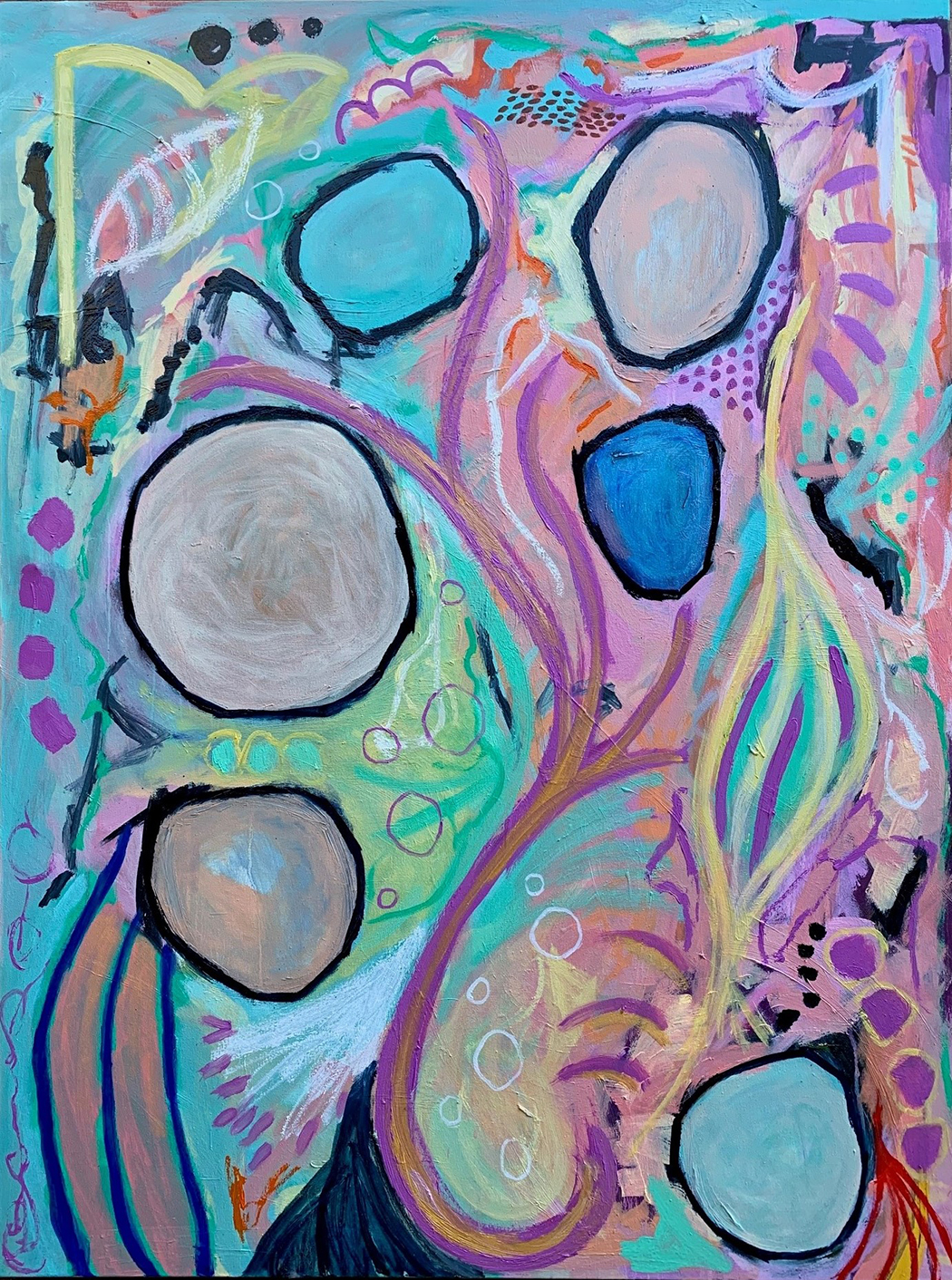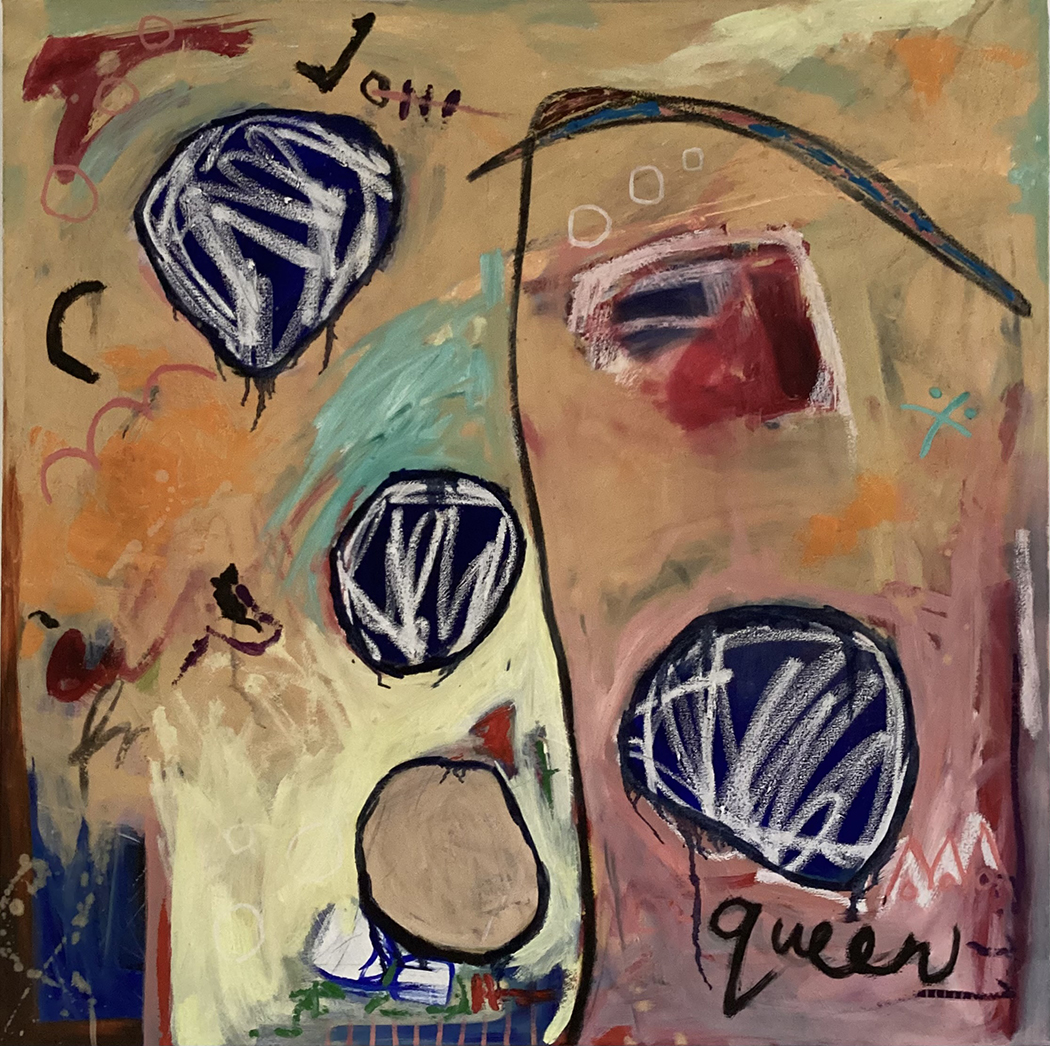Ben Randall
Year of birth: 1975.
Where do you live: Sydney, Australia.
Your education: Bachelor of Visual Arts & Diploma of Graphic Design.
Describe your art in three words: Colorful, Abstract, Expressive.
Your discipline: Painter/Painting.
www.benrandallart.com | Instagram

Your artist statement mentions the intricate beauty of nature and the complexities of humanity as inspirations. Can you share a specific experience or moment in nature that has significantly influenced your work?
A good example is my painting *Pilgrim of a Traveling Gypsy Queen*. It is about a trip to Barcelona, walking and spending time down Las Ramblas. The street is so full of color and life, it’s hard to ignore. I remember sitting in a café just off Las Ramblas, and the song “Sinner Man” came on. I was young, full of life, and ready for adventure. Many years later, I played this song, and it took me back to that café in Barcelona, and I decided to paint that feeling. I could taste the coffee, I could feel the energy of the people, I could see the view out onto Las Ramblas with all the stalls and street performers. The magic of that time never left me, and that song gave me permission to visually document that time in my life.
You aim to create art that evokes emotions and provokes contemplation. How do you select the colors and shapes in your paintings to achieve this effect?
 Ben Randall | Heart Beat Breaks, Slave to the Kiss | 2024
Ben Randall | Heart Beat Breaks, Slave to the Kiss | 2024Your paintings are deeply personal but left open to interpretation by the viewer. How do you balance personal meaning with the potential for diverse interpretations?
You mentioned that you don’t want viewers to ask, “What does this mean?” but instead let the artwork speak to them. How do you guide or influence the viewer’s emotional journey without explicit narrative?
 Ben Randall | Moon Hatched Gardens Gated By Pleasure | 2024
Ben Randall | Moon Hatched Gardens Gated By Pleasure | 2024Your use of abstract forms invites self-discovery and introspection. What kind of feedback or reactions from viewers resonate with you the most?
Given that your work often leaves room for individual reflection, what do you hope viewers will take away from their interaction with your art?
 Ben Randall | Queen3
Ben Randall | Queen3In creating abstract art, do you ever find yourself surprised by your own work after it’s completed? How do those moments of surprise inform your creative process?
To quote Phillip Guston: “I stand in front of a blank canvas and have no clue as to how I created before.”
This is literally me. When the process starts, I am unsure where it will precisely end. There are tricks and tools I use to help start the artwork, and I generally have a color palette in mind, but where the artwork ends is a big guessing game.
I still look at some of my pieces and wonder how I achieved certain aspects that I like. The key is to experiment and play with the paint on the canvas, not to be afraid of making a “mistake.”
But what I love most is just painting and being creative.

Leave a Reply
You must be logged in to post a comment.